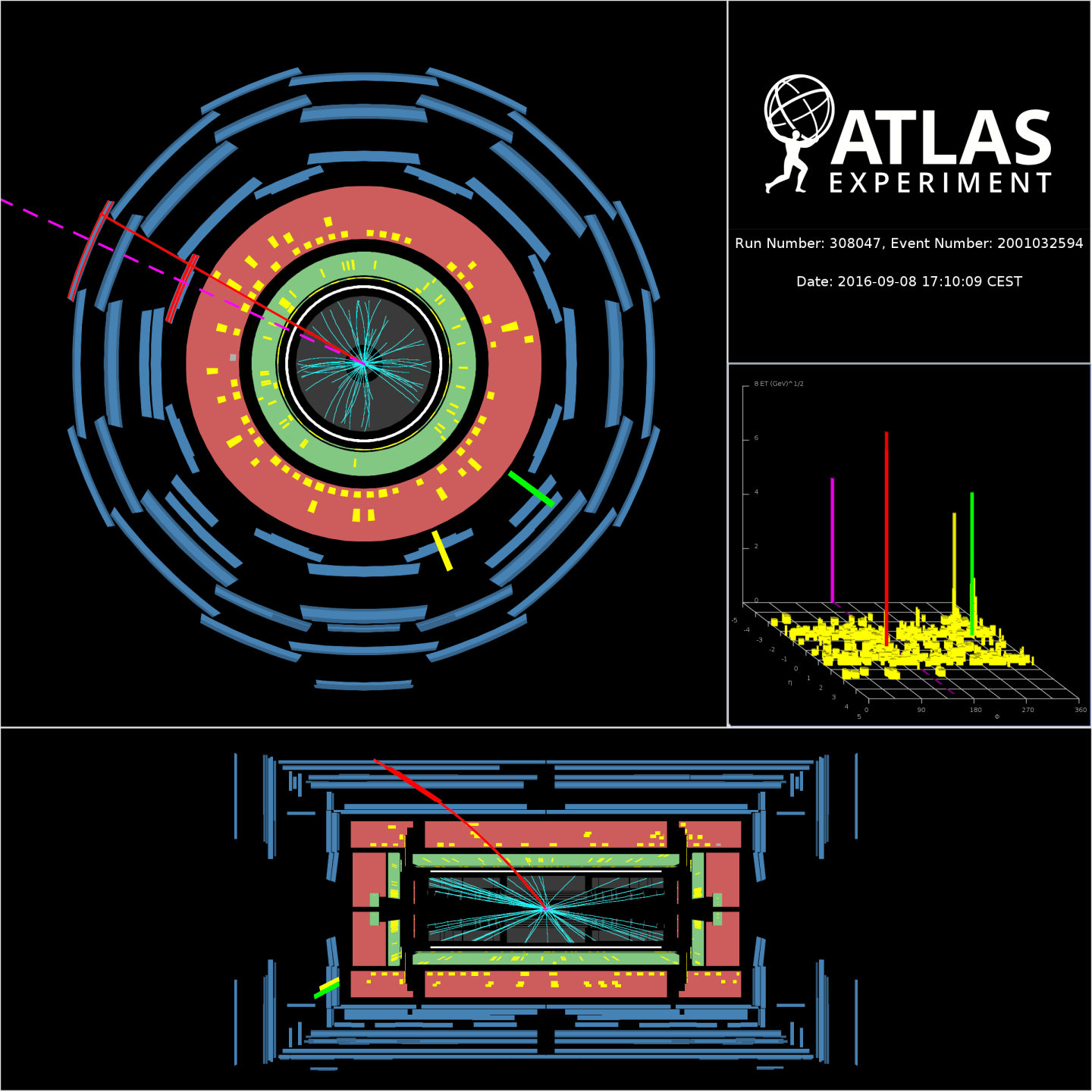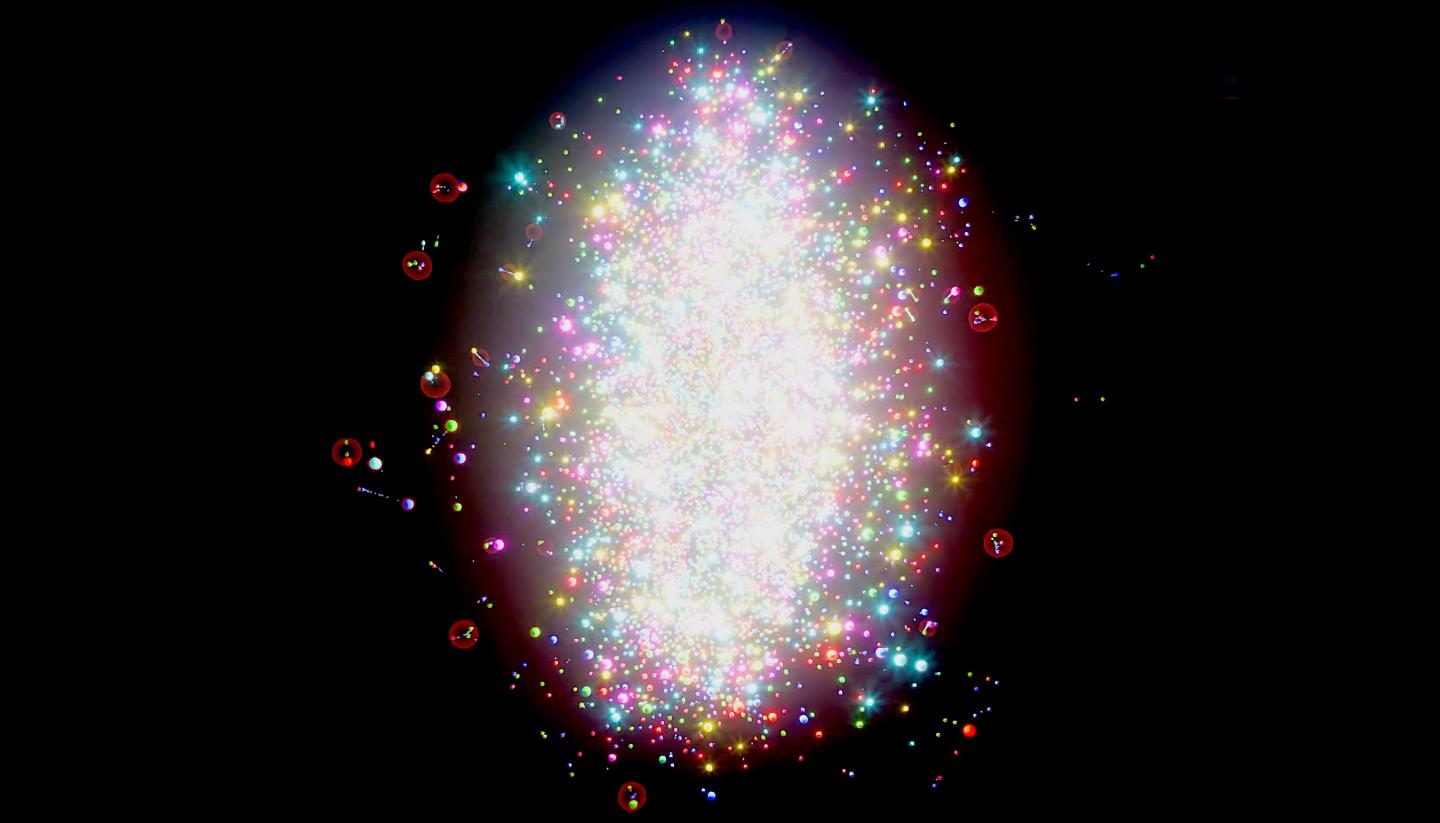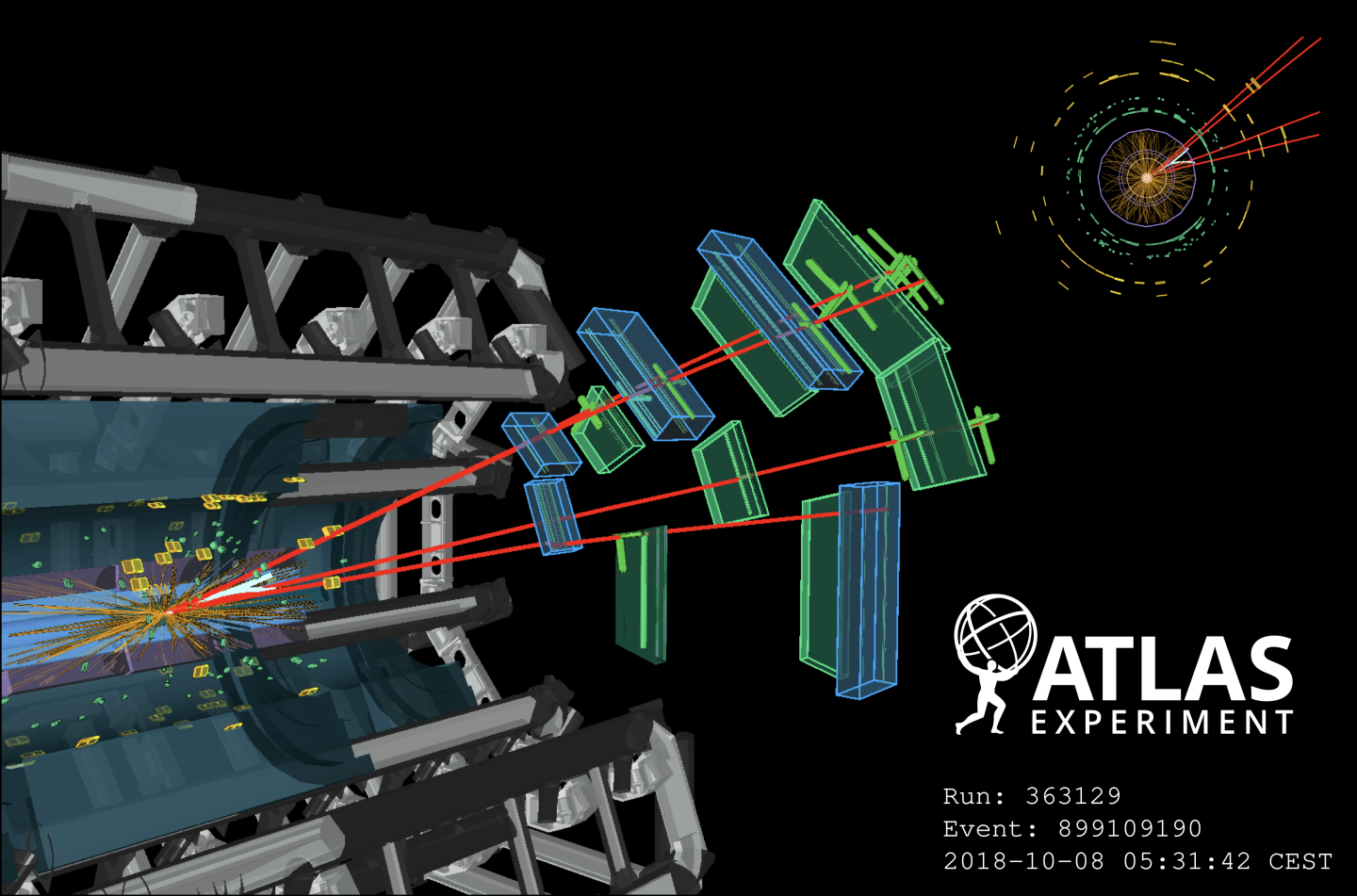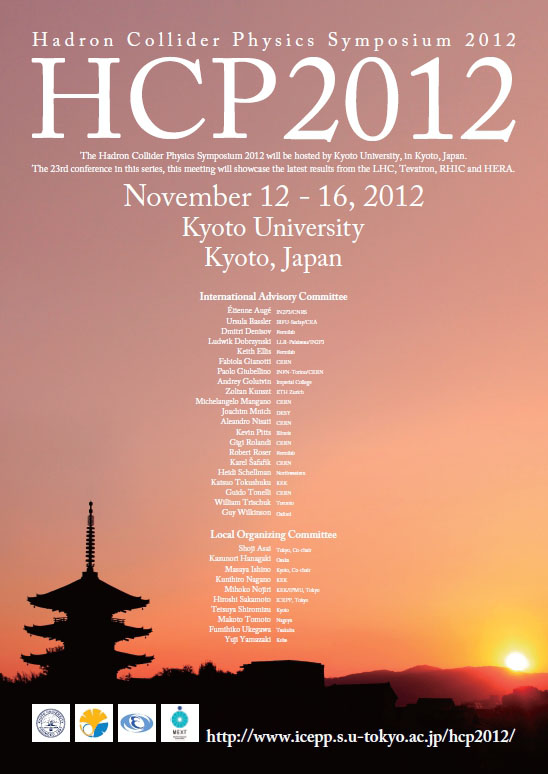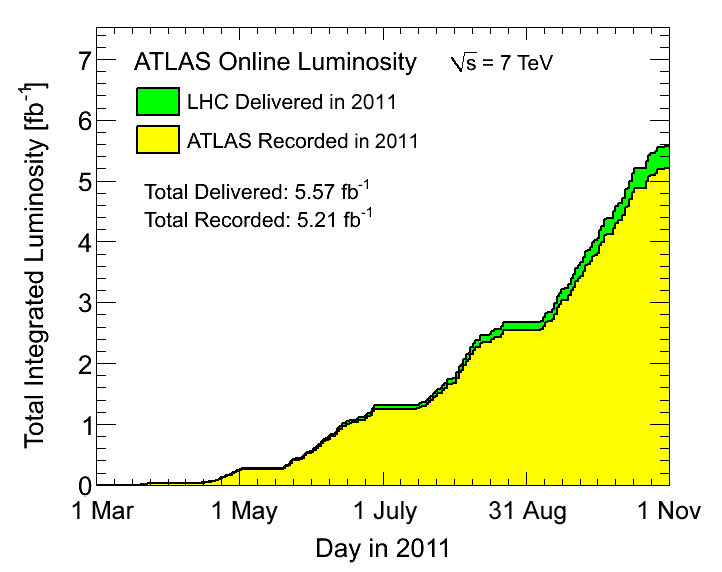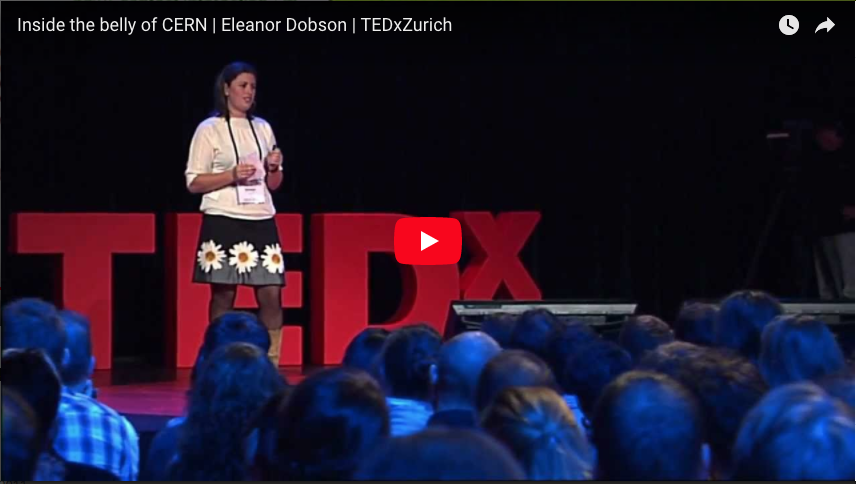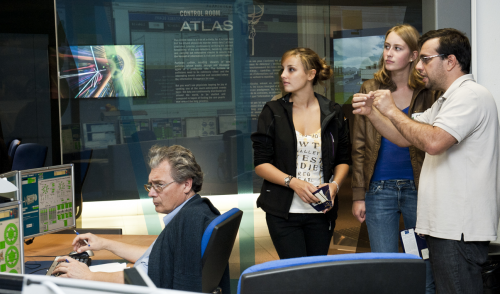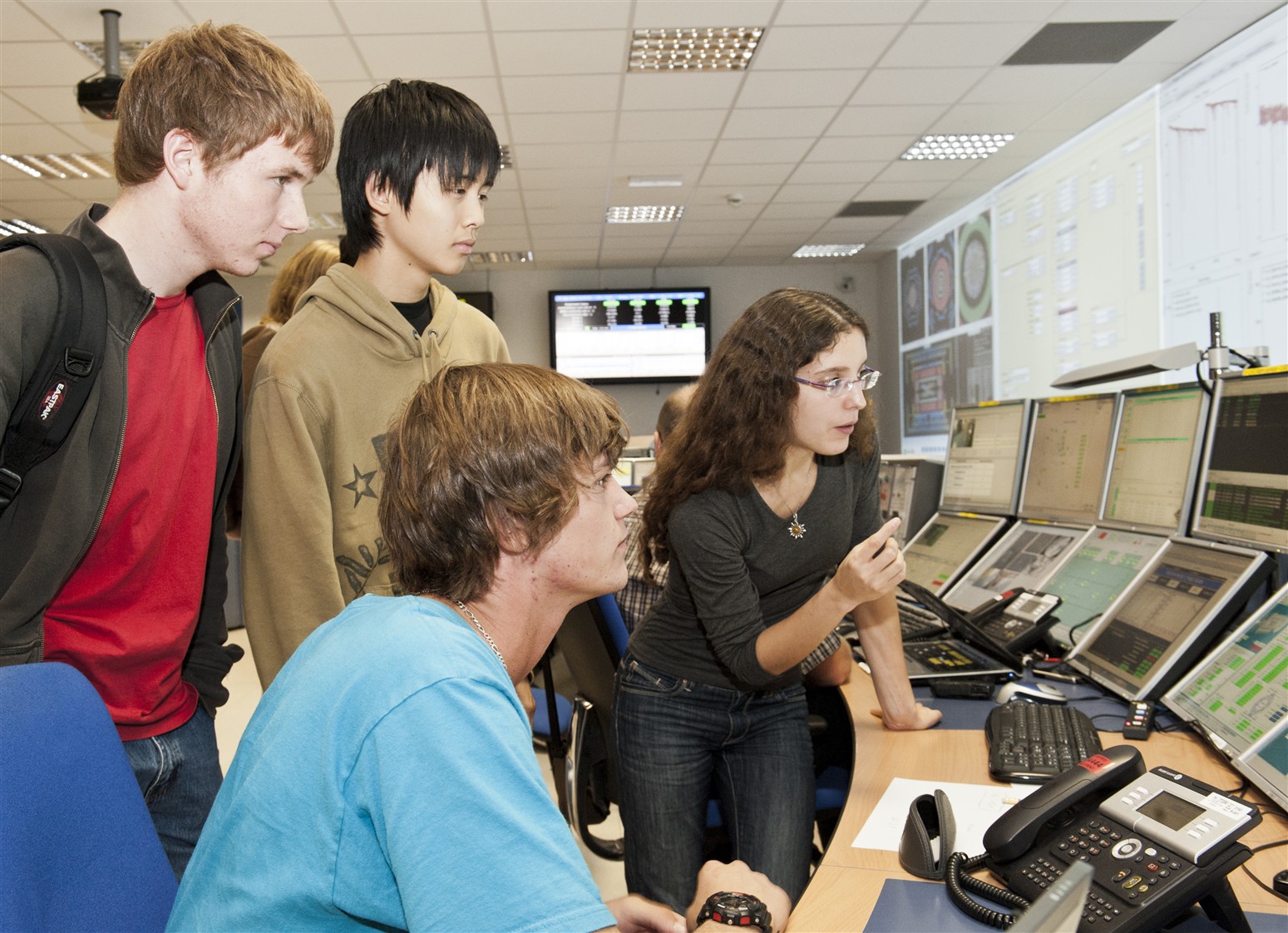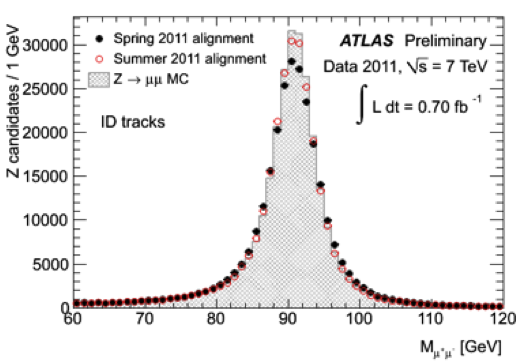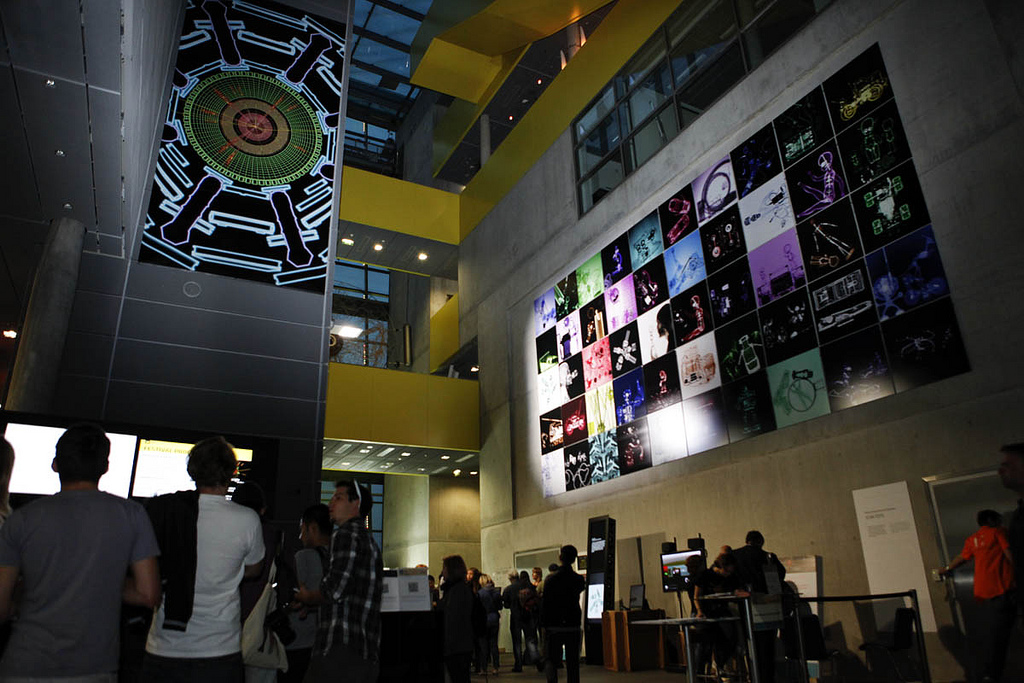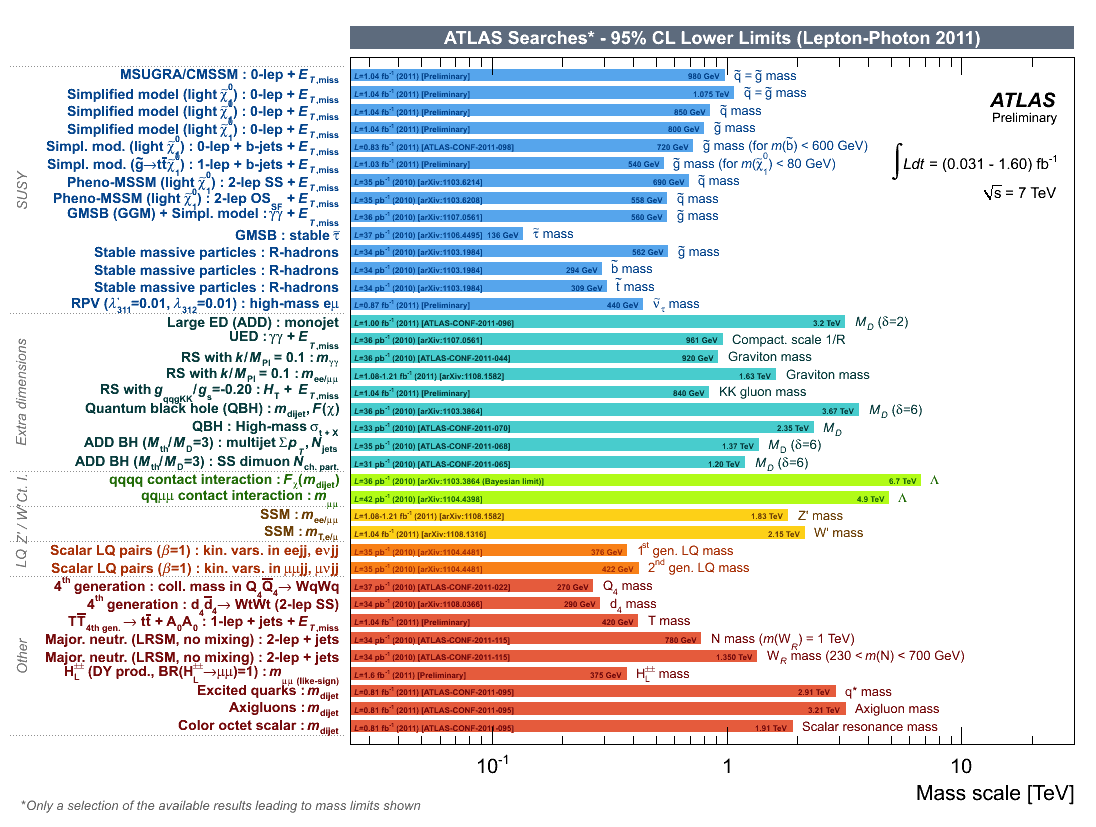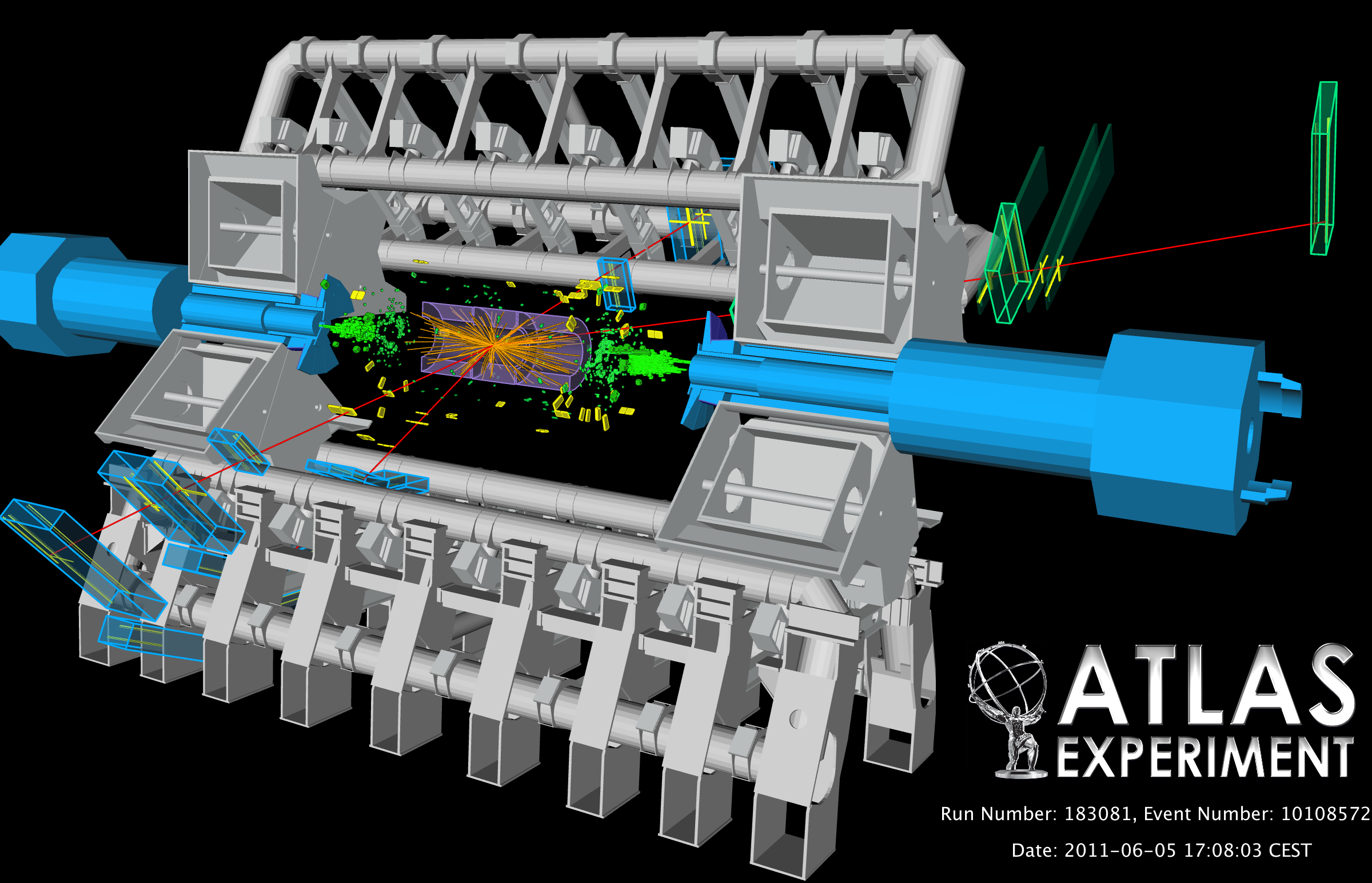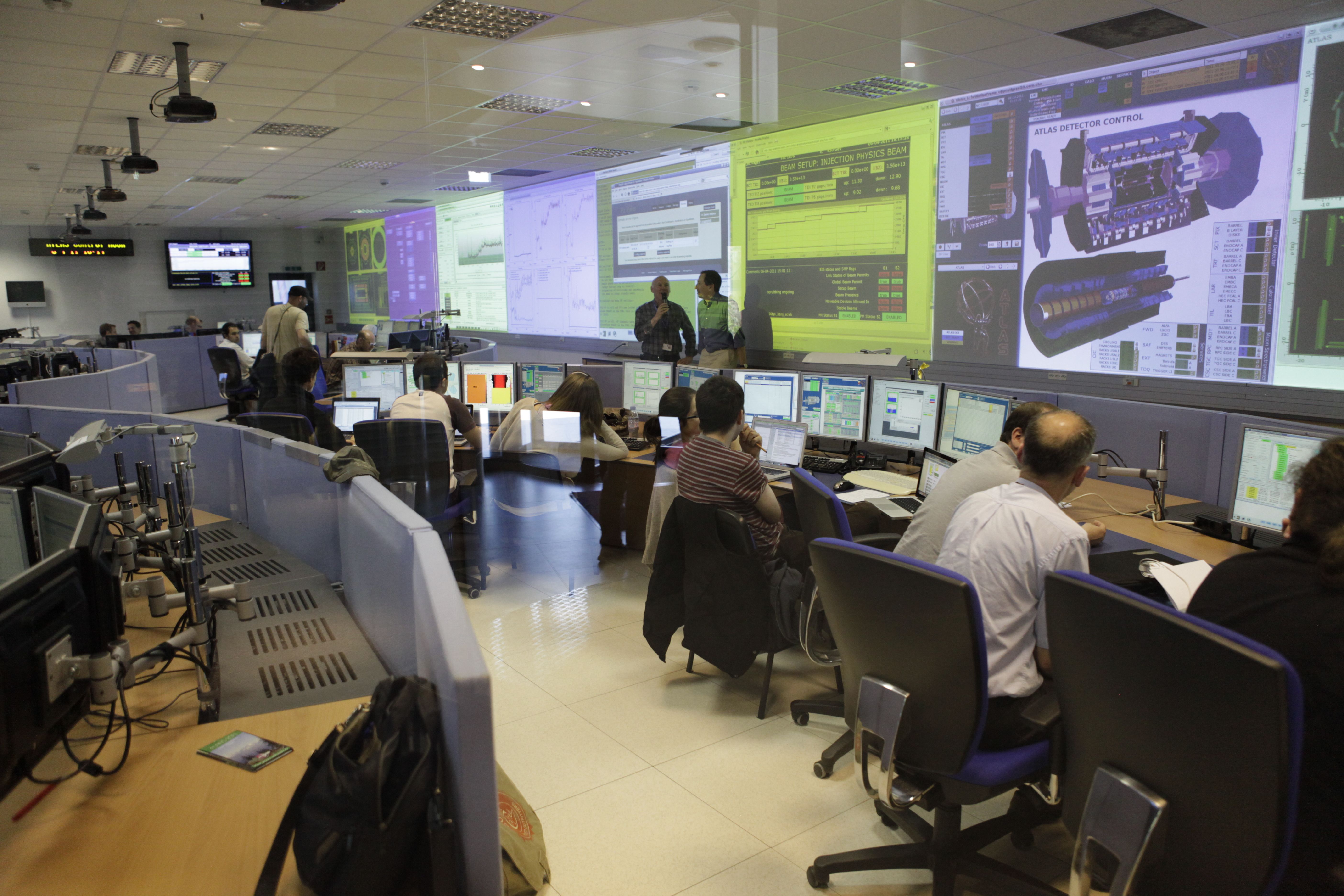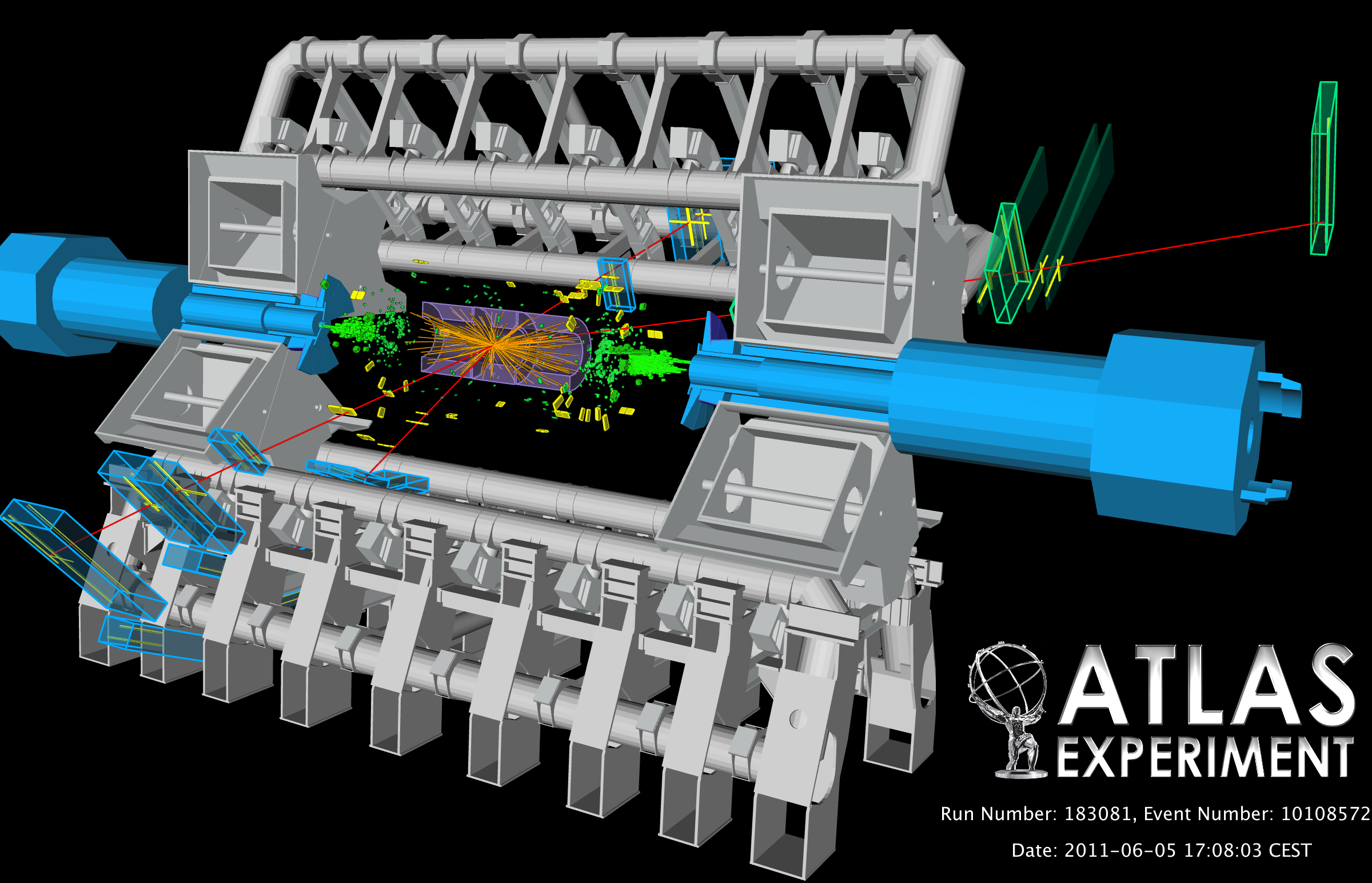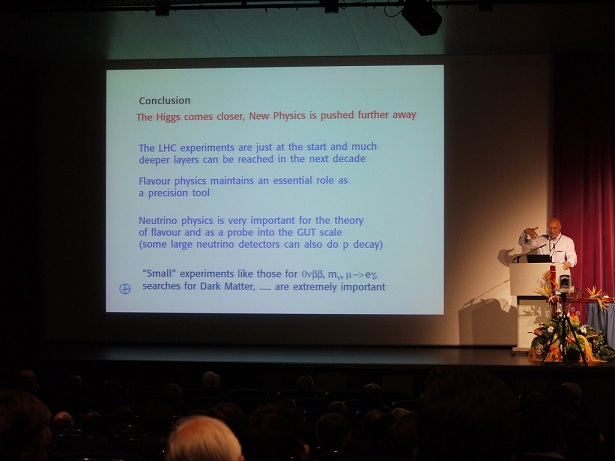ATLAS au pays du Soleil levant pour HCP 2012
Du 12 au 16 novembre, plus de 250 physiciens des particules se réuniront à Kyoto, au Japon, pour partager leurs plus récents résultats. L'une des conférences internationales de physique des particules les plus prisées de l'année, le Hadron Collider Physics Symposium 2012 (HCP 2012), aura lieu, cette année, au pays du Soleil levant.
News |
The longest shift
The clock just turned 2:00 a.m., again, on LHC Page One – the machine’s online status viewer – and I’m pondering just how I ended up on the longest shift of the year. I normally love this evening, snuggling under a warm comforter for that extra hour of late-autumn sleep. But, this year, on the very hour we ‘fall back’, I am cuddling with the controls of ATLAS’s 46 meter long muon spectrometer, a bar of chocolate and an extra cup of coffee. So be it.
Blog |
ATLAS reaches milestone: 5 inverse femtobarns of data!
In an amazing year that has exceeded our expectations, the Large Hadron Collider has delivered, and ATLAS has recorded, over 5 inverse femtobarns (fb-1) of collisions. These units correspond to having 3.4 x 1014 or 340 000 000 000 000 total collisions. Most analyses presented at the last major conference (the Lepton Photon Symposium in August in Mumbai) made use of about 1 fb-1, so this is a big jump.
News |
Le Pop-Up d'ATLAS à Paris!
L'édition francophone de Voyage au Cœur de la Matière sortira le 25 octobre à Paris aux Editions Verlhac (diffusion Seuil). Ce livre animé dévoile une grande aventure scientifique moderne : l'extraordinaire quête menée par l'expérience ATLAS pour comprendre notre Univers.
News |
ATLAS goes Pop in Paris!
A new French edition of the ATLAS pop-up book, Voyage au Cœur de la Matière (Voyage to the Heart of Matter), will be officially launched from the exhibition Entrée en Matière at Paris' Trocadéro on Tuesday, October 25th.
News |
Dispatch from the dispatch: Musings from the Tevatron’s final run
The first time I drove to Fermilab as a grad student, I got kind of lost. However, once I remembered my adviser’s words of advice, it was suddenly easy to find the strangely shaped Wilson Hall, a.k.a. “the highrise sticking out of the Prairies”. During my PhD years with the CDF Collaboration, I went there many a time – to attend meetings, to take shifts. The Chicago area summers were harsh, and so were the winters. On early morning shifts over the Christmas week, I realized that all too well. CDF had over five hundred collaborators at that time and this was my first introduction to a big experiment. Despite its size, everyone still seemed to know each other and it was one big happy family.
Blog |
The Tevatron: Goodnight but not goodbye
The Tevatron collider, the scientific predecessor of the LHC, was shut down last Friday after 26 years of operations. Situated at the Fermi National Accelerator Laboratory (Fermilab) outside of Chicago, Illinois, the Tevatron collided protons with antiprotons at a center-of-mass energy just shy of 2 TeV. While it still held the title of the world’s highest energy colliding beams, it was the intellectual home of hundreds of scientists and students working as part of the CDF and D0 collaborations.
Blog |
“La Nuit des Chercheurs” (Researchers’ Night)
Evening, Friday September 23rd. I came from Saclay (near Paris) to participate in the ‘Researchers’ Night’ event taking place across CERN as part of the European Researchers’ Night initiative. Students aged 13 to 18 were on their way from all around the local area to learn about what on earth it is we do at the mysterious “Point 1” – ATLAS’ home on the LHC ring. Three different groups of 10 or so students were to stay with the ATLAS team in the experiment’s control room from 6:00 p.m. until midnight, helping shifters to take data and monitor the experiment…
Blog |
Moonlighting as a Physicist
There was a lively buzz about the ATLAS Control Room last Friday night, September 23rd, as local high school students descended to get a closer look at just exactly what goes on at the front line of particle physics.
News |
ATLAS never sleeps
Working in an international laboratory like CERN is incredibly exciting, and I’m not just talking about Higgs hunting. People in the outside world are endlessly curious about what happens on the sprawling two-kilometre-long site, and I get asked all kinds of questions, ranging from the funny to the profound.
Blog |
Re-hashing reconstruction
Now that the big summer conferences are under our belts, we’re busy reprocessing the data ATLAS has taken so far in 2011. The raw data we collect at ATLAS – basically millions of electrical signal values from the different bits of the detector – has to be treated (‘reconstructed’) to turn it into meaningful physics data that can be analyzed for signs of new physics.
Blog |
Ars Atlastronica
So I’m back from the Ars Electronica 2011 festival in Linz, Austria. This year the guest of honor was CERN, to kickstart a cultural partnership which will endure over the next three years. The event was amazing, and the organization spotless. As Claudia mentioned in a previous post, CERN was well represented visually at the festival, mainly via a strong display of ATLAS multimedia throughout the many exhibit halls and events.
Blog |
Science and art collide at Ars Electronica
Located in Linz, Austria, Ars Electronica is an exhibition centre and creative lab which “has been investigating the consequences of the Digital Revolution” since the late 1970’s. Ars Electronica holds a yearly festival that attracts thousands of people from Austria, Germany and the rest of the world. This year, the theme of the festival, which is happening in collaboration with CERN, is ‘Origin – how it all begins’.
Blog |
Philosophising physics
Last Monday (August 22), within a tight 35-minute allocation, ATLAS’ Henri Bachacou presented the entirety of the results from ‘Beyond the Standard Model’ searches for BOTH the ATLAS and CMS experiments, to the Lepton Photon conference in Mumbai, India. This included results of studies on Supersymmetry, strong gravity, heavy resonances and long-lived particles, and was a staggering amount of information to convey in an extremely limited amount of time. Henri did a great job, firing through slides, and guiding the audience through the most up-to-date results from the wide range of exotic topics. He did have one thing on his side, however… from each search, from each physics topic and from each experiment, the results came back the same: Has the LHC seen anything beyond the standard model yet? Nope.
Blog |
Higgs results from Lepton Photon
The Lepton Photon 2011 conference began on Monday in Mumbai, India. Over 400 physicists from all over the world (including me!) gathered to hear the latest results. One result in particular -- news on the search for the Higgs boson -- was foremost in people's minds, and rather than prolong the suspense further, the talks on the Higgs were scheduled right after the welcoming speeches.
Blog |
ATLAS advances in the search for the Higgs and New Physics
The ATLAS experiment has continued to record data and to refine the analyses in the search for the Higgs boson and many other exciting signatures of new physics. The latest results are being presented at the Lepton Photon 2011 symposium in Mumbai, India, 22-27 August 2011. Since the previous meeting (the European Physical Society — EPS, Grenoble, France, 21-27 July 2011), the LHC has almost doubled the data provided to ATLAS.
News |
ATLAS at Lepton-Photon 2011, Mumbai
The ATLAS Collaboration is pleased to be presenting its latest results at the Lepton Photon 2011 conference in Mumbai 22-27 August 2011.
Top down: Reflections on a long and sleepless analysis journey
For the last months (which feel like years…) I’ve been working, within a small group of people, on the precision measurement of the top quark pair production cross section, and if you think that sounds complicated – the German word is “Top-Quark-Paarproduktionswechselwirkungsquerschnitt”.
Blog |
Frantic for femtobarns...
In particle physics, we describe the number of interesting particle collisions that we have in our data in terms of the "integrated luminosity", which is measured in units called inverse femtobarns. In the whole of 2010, the LHC delivered about 0.04 inverse femtobarns (about 3 million million collisions). Nowadays, it can deliver twice that in a single day!
Blog |
ATLAS Presents New Results at Lepton Photon 2011
The ATLAS Collaboration is pleased to be presenting its latest results at the Lepton Photon 2011 conference in Mumbai 22-27 August 2011.
News |
A look back at the EPS
I happened to run into Andrey Korytov after his eagerly awaited CMS Higgs talk. No, CMS had not yet seen the Higgs, and ATLAS could breathe a sigh of relief.
Blog |
A view inside the ATLAS Higgs combination
Well it's been a few days since the Higgs presentations at EPS, and I'm just recovering from the lack of sleep. It's ironic that I have a newborn daughter, and my sleep deprivation is due to work.
Blog |
Arrival at EPS
When I was invited to give a talk on behalf of ATLAS at this summer’s European Physical Society High Energy Physics conference (EPS), I wasn’t really sure what to expect. Most conferences I have been to are relatively intimate affairs where you have long discussions after every talk and then everybody trots down to the pub together to discuss the day’s results. EPS, though, is one of the largest particle physics conferences in the world. Or at least I reckon it is, having eyeballed the number of participants registered on the website, hailing from all sorts of fields ranging from astrophysics to ultra relativistic ions to our very own LHC proton-proton collider physics.
Blog |
ATLAS results revealed at EPS HEP 2011 conference in Grenoble
Many members of the ATLAS Experiment Collaboration have been at the European Physical Society's HEP 2011 conference in Grenoble, France, this week, revealing the results of 35 new and exciting physics analyses for the very first time.
News |


